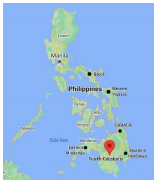
Submission to VIJ 2024-01-02
Keywords
- abaca fiber, hand stripping, indigenous people, sharing agreement, tuxying, value adding
Copyright (c) 2024 Gigi B. Calica, Genie Marie D. Galapon, Raymund Joseph P. Macaranas

This work is licensed under a Creative Commons Attribution 4.0 International License.
Abstract
The Philippines is one of the two countries commercially producing Manila hemp or the fiber from abaca (Musa textilis Nee) which is indigenous in the country. The abaca fiber or known as Manila hemp worldwide is highly demanded not only domestically but internationally. As a major producer of abaca fiber in the world, we need to meet the demand by increasing its supply and improving its quality. Thus, a baseline information on its production and postproduction is vital to understand the current practices of the Indigenous Peoples (IPs) who are producing the product. A focus group discussion, key informant interviews and surveys were conducted in North Cotabato to gather data on the farmer, trader and processor levels. Data were processed into descriptive analysis and cost and return. Research results showed that majority of the farmers utilized family labor in the production however, postproduction practices such as harvesting, tuxying, hand stripping, sundrying and bundling activities were entered into a sharing agreement. Postproduction activities were done manually and took them one month to finish a hectare of abaca plantation. Generally, abaca fiber outputs were in low quality thus, farmers received low price and consequently low income so women in the community were engaged into value adding activities to augment their family income.
References
- Abamo, A. P., & Aragon, C. T. 2007. Economic Modeling of Technology Differences and Global Competitiveness of the Abaca Fiber Industry in the Philippines. Philippine Journal of Crop Science (Philippines).
- Abgona, Remedios V., Hilario, Celerina T., Abriol, Edgar A., Josol, Fidel S., Barcelona, Ramil B., De Vera, Romeo P.2008. Improved Handstripping (Hagotan) Device. Patent No. 2-2008-000293Fiber Technology and Utilization Division. Fiber Industry Development Authority. 2008
- Agricultural Process and Technology. n.d.. Retrieved from https://www.chingbee.com/process-and-technology/
- Göltenboth, F., & Mühlbauer, W. 2010. Abacá-cultivation, extraction and processing. Industrial applications of natural fibres, 163-179.
- Google map.
- Philippine Council for Agriculture, Forestry and National Resources research and Development (PCARRD). Profitability analysis: Abaca Fiber Production, Los Banos, Laguna, PCARRD, 2007. 24p.– (Profitability Analysis No. 05/2007
- Philippine Fiber Industry Development Authority (PhilFIDA). Quezon City, Philippine
- Richter, S.K. Stormann and J. Mussig.2013. Abaca (Musa textilis) grades and their properties – A study of reproducible fiber characterization and a critical evaluation of existing gradingsystems. Industrial crops and products. Volume 42, March 2013 pages 601-612.
- Sudaria, E.E., Vinh, T.N., de Ramos, J.D. 1986. Design and Development of a Low Cost Abaca Stripper. Agricultural Machinery Testing and Evaluation Center, University of the Philippines Los Baños. March 1986
- The Editors of Encyclopedia Britannica. 2014, July 07. Abaca. Retrieved from https://www.britannica.com/plant/abaca
- Valenzuela, Adriano C., Catbagan, Warrior D., Jabay, Petronilo B., De Vera, Romeo P., Josol, Fidel S., Abriol, Edgar A. 2008. Mobile Abaca Spindle Stripping Machine. Patent No. 2-2006-00034. Fiber Technology and Utilization Division. Fiber Industry Development Authority. 2008
- Waller, V and A. Wilsby. 2019. Abaca in the Philippines. An overview of a potential important resource for the country. KTH, Stockholm, Sweden.